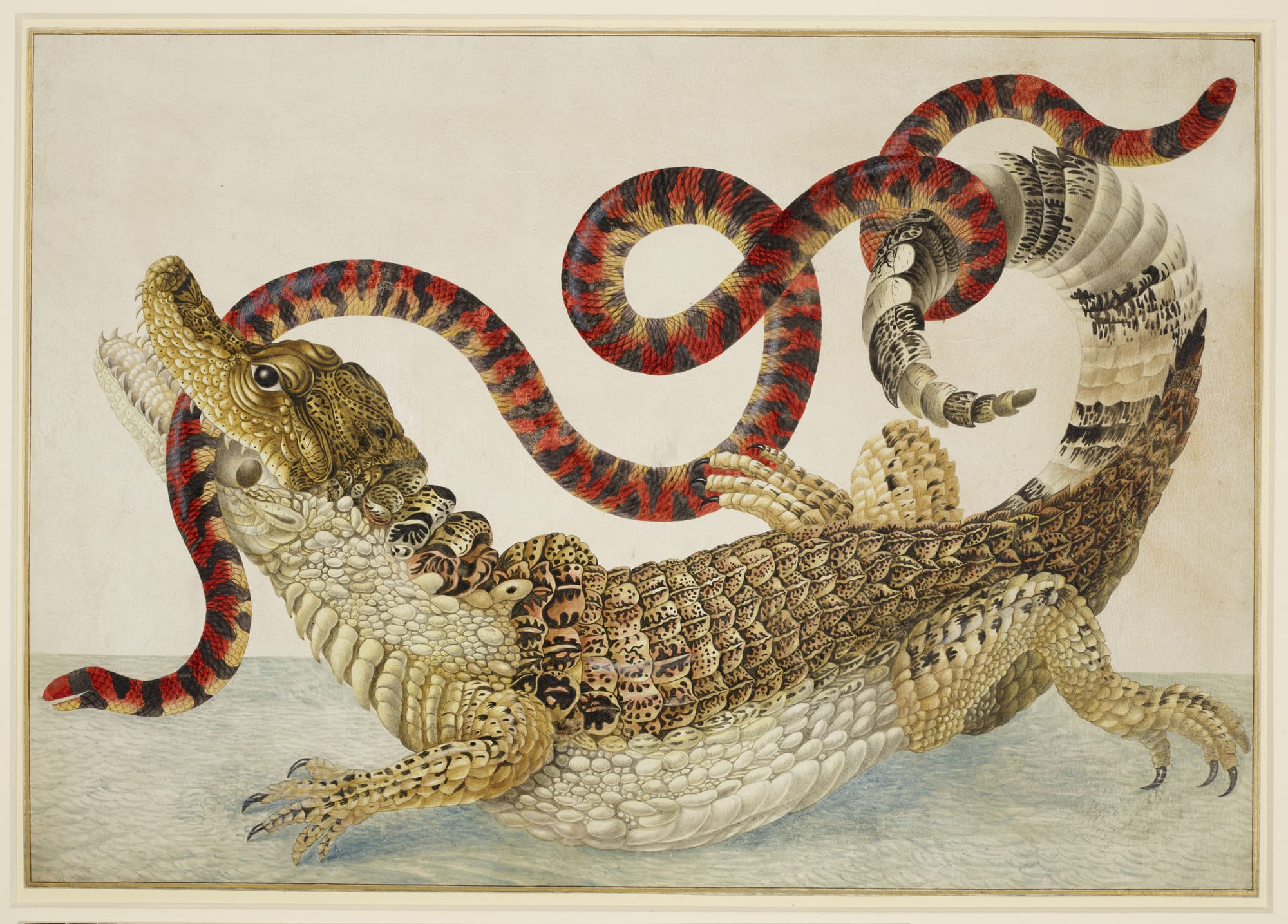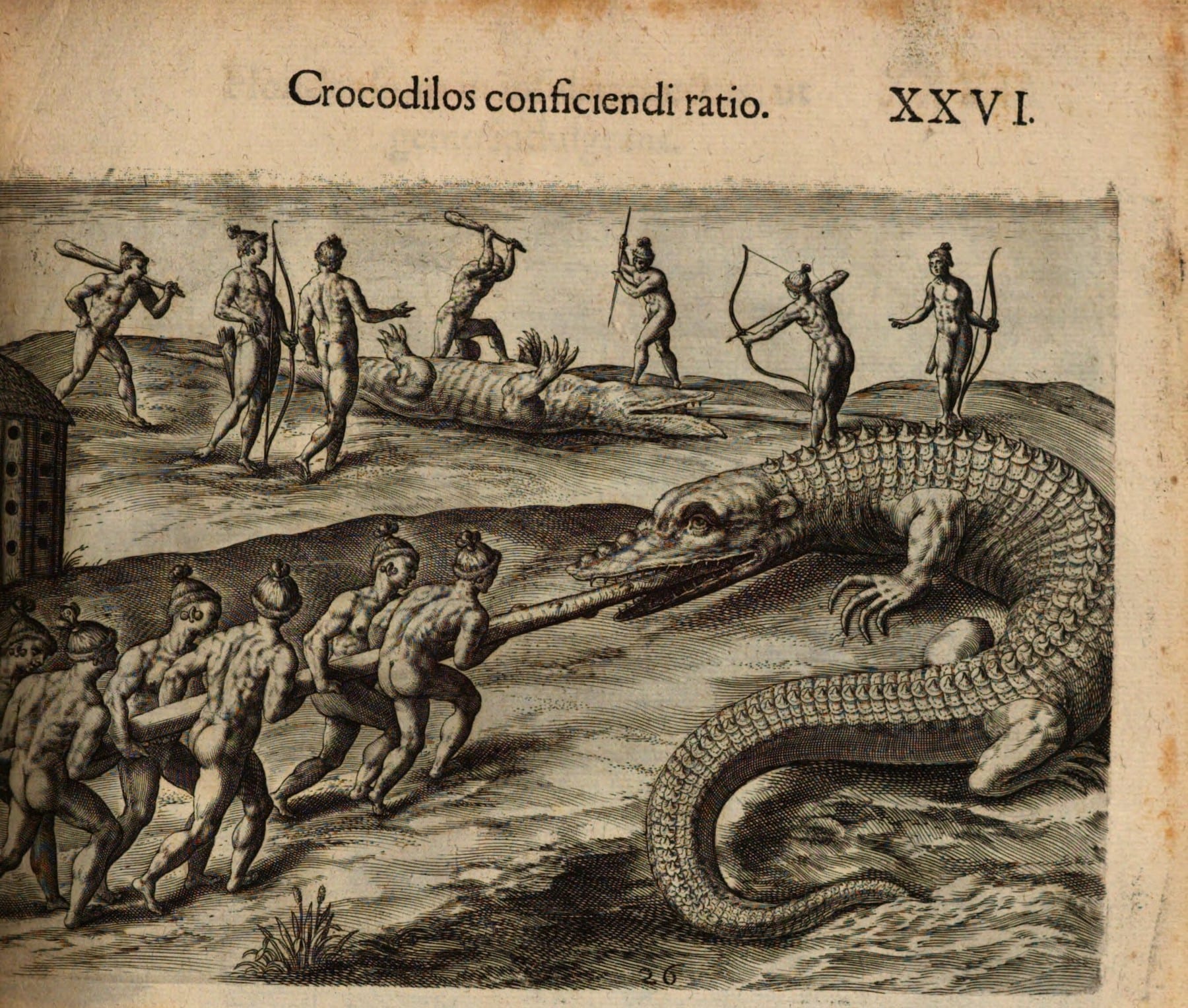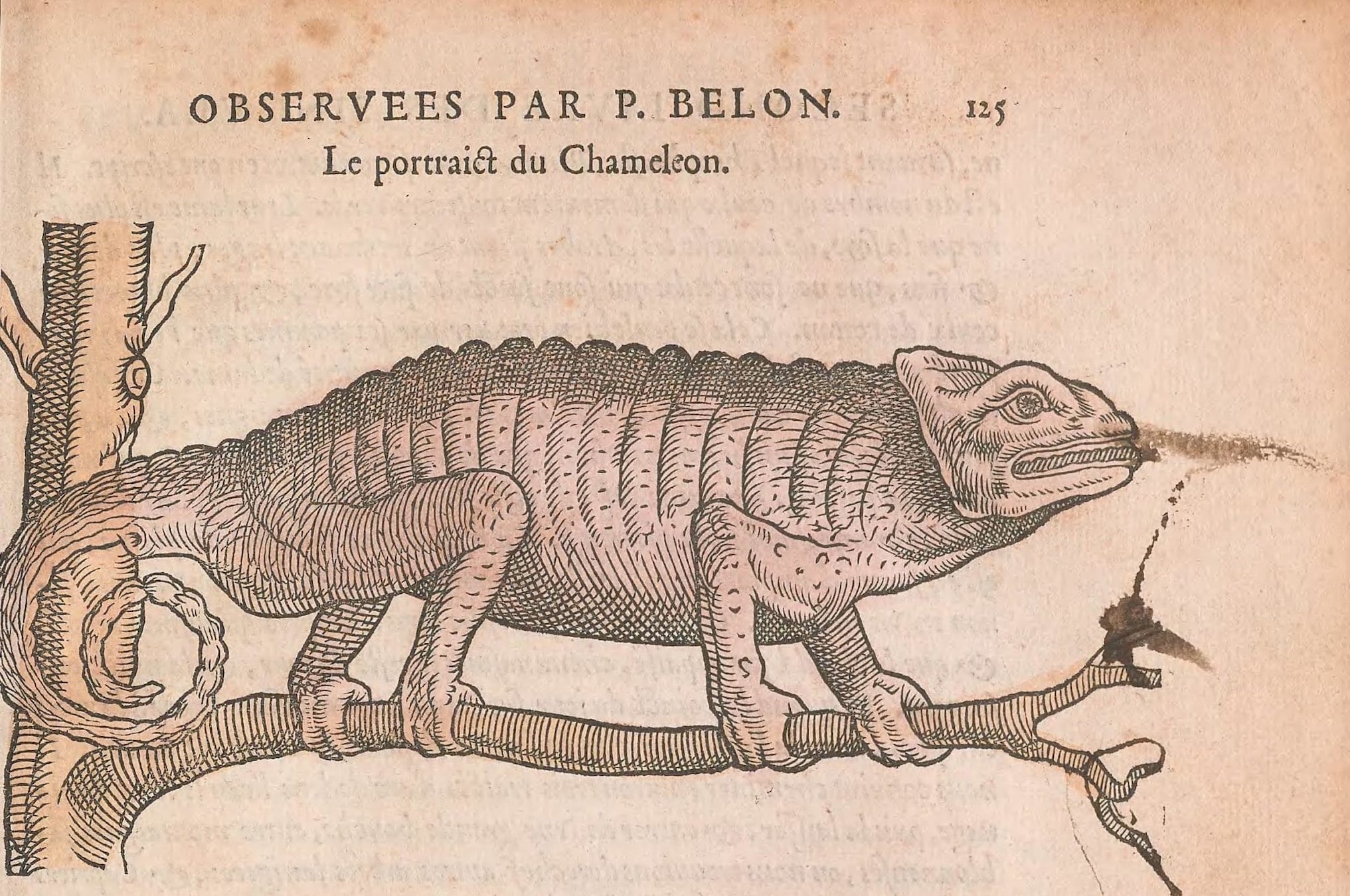The history of how reptiles and amphibians have been represented throughout history has been well covered by Professor Kay Etheridge of Gettysburg College in a learned article in 2007. She starts off by reminding her readers that “loathsome beasts” have received less attention than higher vertebrates, largely as they are not useful for food, sport, or even medicine. Since about the twelfth century, however, they have been featured in herbals and bestiaries, perhaps largely to amuse and educate the wealthy.
These drawings and paintings have also been important to natural scientists and art historians. For a long time they were the only way to definitively display organisms, since specimens were difficult to preserve and keep their color in liquids such as alcohol. They also served as illustrations for travel books, tapestries, and carvings. In France, chameleons, snakes, crocodiles, and “winged serpents” were first depicted in the travel accounts of Pierre Belon (ca.1554). At about the same time his Swiss contemporary Conrad Gesner published a five-volume Historia Animalium in which he showed a Nile crocodile and a “winged serpent.”
Also in the sixteenth century there appeared the travel accounts and illustrated encyclopedias of the Italian Ulisse Aldrovandi, the Englishman Edward Topsell, and Jan Jonston from Poland, illustrating real animals from their collections as well as mythical ones. In Naples, the apothecary Ferrante Imperato (ca.1599) maintained a collection designed to serve as a place of study for visiting scholars as well as to conserve the raw ingredients for his medicines. His representation of processes such as the birth of young vipers with such accuracy indicates that he must have clearly carried out the dissections himself.
By the seventeenth century, Oliger Jacobaeus of Denmark would draw the internal anatomy of frogs and lizards with fair accuracy, and was one of the first to illustrate the stages of amphibian metamorphosis from egg to adult. In Germany, Maria Sibylla Merian published beautiful books showing flowers, butterflies, and moths. These were followed by the illustrations of the English naturalist Mark Catesby (ca.1740) and the German August Johan Roesel von Rosenhof, and somewhat later by the forty-four volume Histoire Naturelle by the Count de Buffon (1707-1788) and the works of Bernard Germain Étienne de Lacépède. Soon illustrated natural history books became the rage of the publishing world, aided by the discovery of lithography, as an increasingly educated public became entranced by nature, and accordingly also by the studies on reptiles.
Later the purpose of these images changed from showing imaginary or exotic beasts to increasingly correct and detailed representations of plants and animals, but also rendering them with a certain aesthetic quality, such as snakes draped around flowering plants like baroque ornaments. It is apparent, then, that throughout history illustrations of “loathsome beasts” served multiple purposes. In science, they made it possible to display and preserve representations of common animals, and of unusual and exotic animals as they became known. Art historians learned to depict and show them in pleasing and ways. This may have helped assuage the fear and repugnance with which we tend to view these animal forms. As Etheridge has suggested, looking sympathetically at snakes and crocodiles may also teach us more about ourselves.
Reference
Etheridge, K. “Loathsome beasts: Images of reptiles and amphibians in art and science.” Origins of Scientific Learning: Essays on Culture and Knowledge in Early Modern Europe. Eds. S.L. French and K. Etheridge. (Lewiston NY: Edwin Mellen Press, 2007), 63-88
 |
 |
 |
| Common or Spectacled Caiman with South American False Coral Snake c.1705-10. Maria Sybylla Merian. Royal Collection Trust. | Illustration from Brevis Narratio Eorvm Qvæ in Florida Americæ Provicia Gallis Acciderunt … , By Jacques Le Moyne de Morgue. 1609. Austrian National Library. | Illustration from Les obseruations de plusieurs singularitez et choses memorables : trouuées en Grece, Asie, Judée, Egypte, Arabie … en trois livres, By Pierre Belon. 1554. Smithsonian Library. |
GEORGE DUNEA, MD, Editor-in-Chief

Leave a Reply